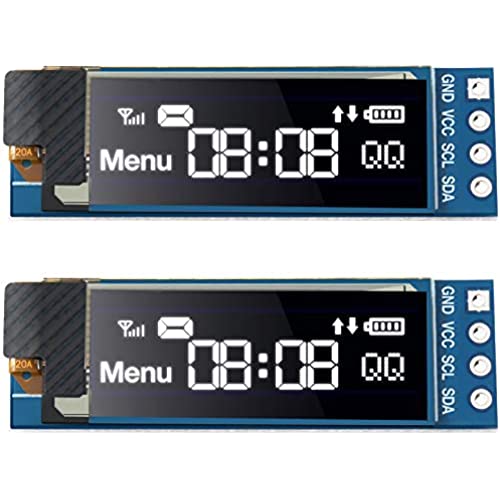
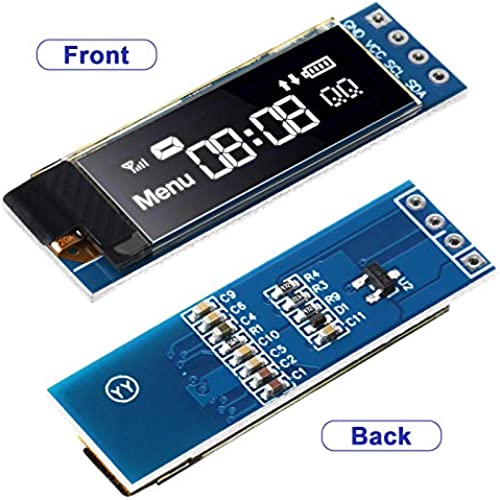
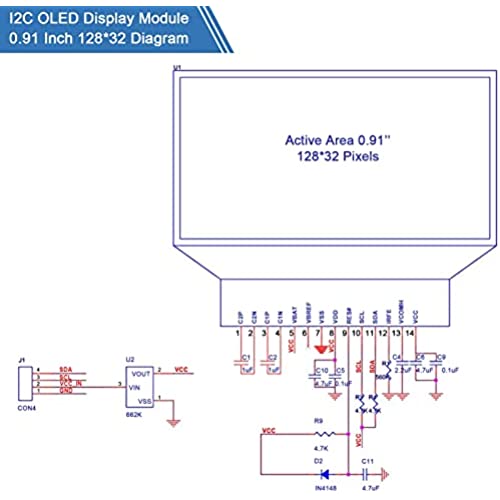
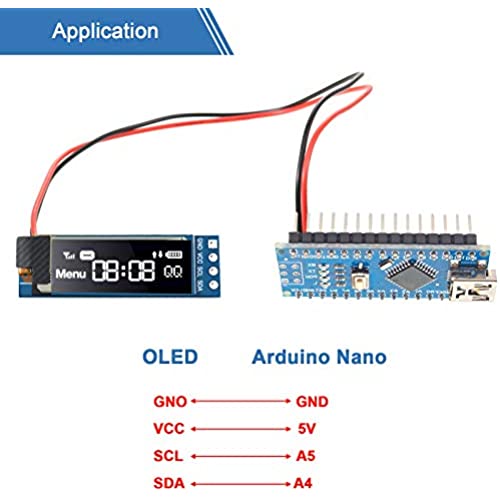

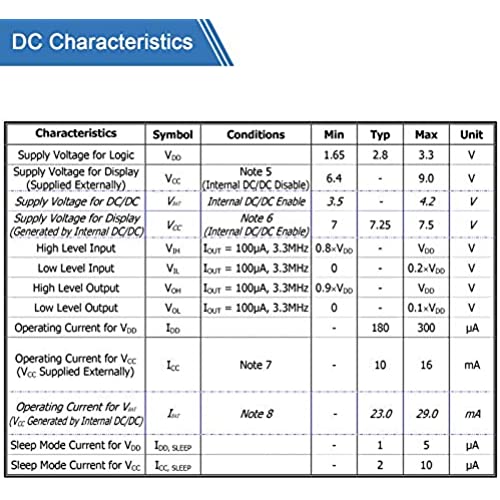
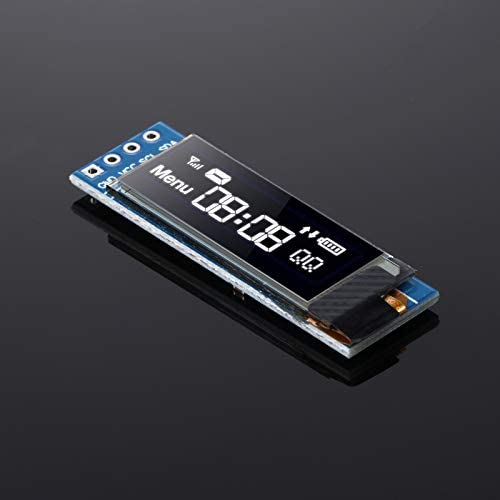











2 Pieces I2C Display Module 0.91 Inch I2C OLED Display Module I2C OLED Screen Driver 3.3V - 5V (White Light)
-

marcus
> 24 hourAfter about 2 days I went back to my project the screen no longer worked . So I installed other and it has been working fine for over a week.
-

gayle gray
> 24 hourPretty easy to get screen up and going. I2C address was 0x3C. I have tested 1 screen so far and overall the product does what I need. However buyers should be aware of the following: -32 x 128 pixels are not in center of glass screen. (picture 1: all pixels lit) -Pixels do not go to the edge of the glass. (picture 1) -Pixels in the top two rows appear to light up when pixels on the 3rd row are lit (picture 2). Current Draw: - based off some measurements I took with a cheap DMM: --All pixies off current = 4.9 mA --All pixles on current = 27.5 mA --Current (mA) = (Percent of pixles lit / 100%) * 22.6mA + 4.9mA Frame Rate (with adafruit library): -max frame rate with 400khz I2C: ~73fps -max frame rate with 800khz I2C: ~130fps
-

Dave Thurbon
> 24 hourI wanted to use this for a solar-powered cloud-connected temp/humid meter. Ive made a few of these already. However this display would not work with the SHT40 sensor. The sensor and display both sit on the I2C bus and you should be able to connect up to 127 devices on the I2C bus, but when I add the standard SSD1306 OLED code from the example in the Arduino IDE, the MCU can no longer see the SHT40 sensor, says its not present, and nothing ever shows on the display. When I comment out the SSD1306 OLED code the sensor works fine. Theres no I2C address printed on this display and no mention of one in the description. I tried the standard one of 0x3c and also 0x3d but got nothing. Have never seen the display light up at all, not even the splash screen.
-

Kindle Customer
> 24 hourHad a good time configuring it for my electronic projects
-

StPaul
> 24 hourThe active display area is about 1/4th by 7/8ths of an inch. You have to get creative to display anything useful on a display that small.
-

Kyle
> 24 hourA pretty easy-to-use SSD1306, 128x32 resolution. I recommend playing around with the SSD1306 example in the Arduino library to learn how it works, its pretty simple once you get the hang of it
-

Dan
> 24 houri havent had a chance to put these into a project yet but i tested one for fun and it worked just fine.
-

Sybarite
> 24 hourBoth boards doa
-

T. K. Lowell
> 24 hourNeither unit worked. Neither showed up on I2C scanner.
-

GeooeG
> 24 hourBought this to use as a display for a BBC Micro:bit GPS beacon project. I am using the Arduino IDE and Adafruit SSD1306 & GFX libraries. The i2c address which matches what the Adafruit libraries assume. I have not had a chance to use these in full sun, but they look really bright. Super happy with the product.
